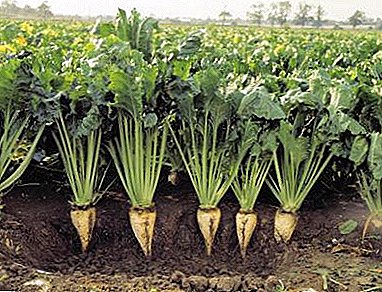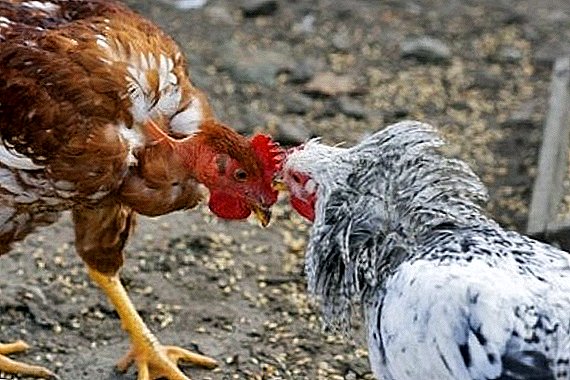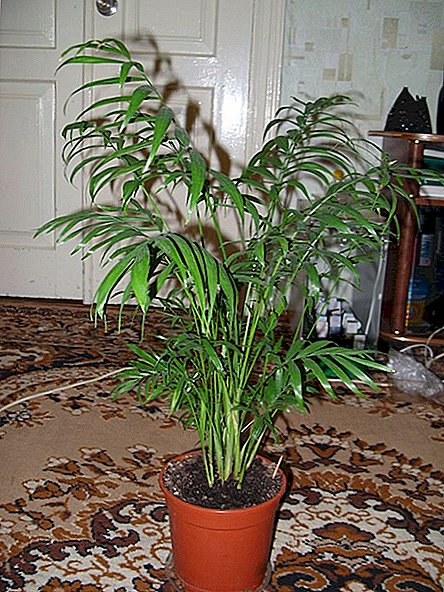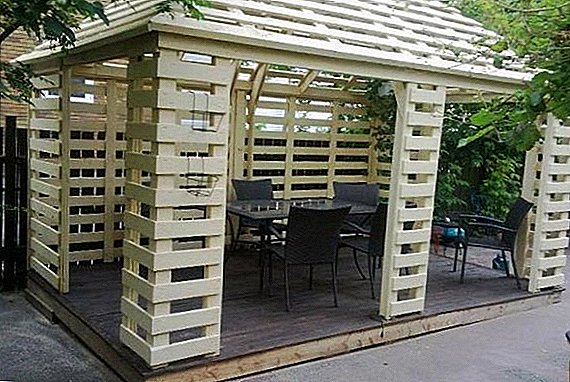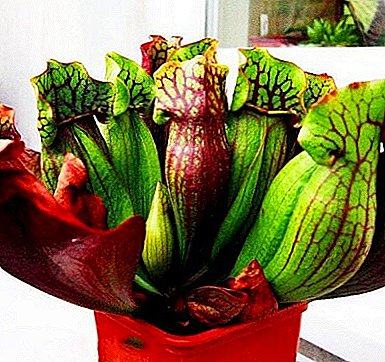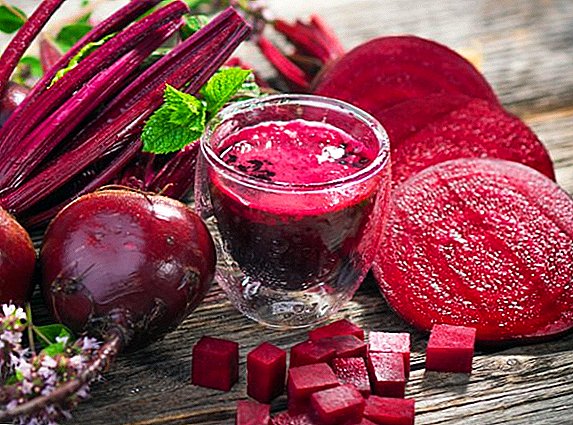 Beetroot is a product that has been stored for a long time; it is present on the shelves all year round, so there seems to be no point in specially preparing it for the winter. But if the harvest has grown notable, but there is no cellar for storage, nothing remains but to try to freeze the root crop. It turns out that there are many ways to make such a workpiece, as they say, “at home”.
Beetroot is a product that has been stored for a long time; it is present on the shelves all year round, so there seems to be no point in specially preparing it for the winter. But if the harvest has grown notable, but there is no cellar for storage, nothing remains but to try to freeze the root crop. It turns out that there are many ways to make such a workpiece, as they say, “at home”.
Are nutrients preserved when frozen?
Freezing is perhaps the most rewarding way to harvest vegetables for the winter. Firstly, it is very simple and fast (as opposed to conservation, which is associated with long standing at the stove). Secondly, no additional resources are spent, because the fridge works for you all year round. And thirdly, in this case, almost all the nutrients with which a particular plant product is rich are saved. Beet in this regard is no exception.
Important! To maximize the preservation of all the "wealth" in a vegetable, you should try to freeze it as soon as possible after removing it from the bed. - the faster the better!
Of course, to say that the vitamins in frozen vegetables are stored completely, not quite right. For example, the loss of vitamin C in frozen beets will be about 25%, vitamin B1, which is also rich in root vegetables - almost the same. However, as they say, looking to compare.

Surely a vegetable picked from the garden is much more useful than thawed. But after all, in the winter, fresh vegetables in the literal sense of the word have nowhere to get. What we eat - in any case, somehow stored, and not one day. In order for the vegetables to linger until winter, they are usually harvested ahead of time and treated with special preparations that prevent decomposition and the formation of mold. This does not always give the expected result, so that on the shelves you can often find fruits with signs of rot, fungus, as well as black spots, indicating improper storage. It turns out that a fresh-frozen vegetable from its own summer cottage, with all the vitamin losses, is much more useful than it was bought in a supermarket or on the market in the middle of winter.
Read the same as freeze for the winter: tomatoes, carrots, eggplants, brussels sprouts and mushrooms
And if you consider that it is not clear under what conditions the beets after the onset of cold weather also significantly increases in price, it becomes clear that freezing this root crop is not the worst way out!
Preparing beets for freezing
There are lots of recipes for frozen beets, however, in any case, for long-term storage of vegetables need to properly prepare. First of all, you need to select the roots, suitable for harvesting in the winter. Only young, fresh, hard, fully mature and preferably not very large specimens of maroon color, without any signs of lesions, rotting and other defects, are uniquely suitable for these purposes.
Important! Early beet varieties have not very high taste, their cultivation has another goal - saturate the market after a long period of avitaminosis. Such beets are not suitable for freezing!
Besides, root vegetables with hairs on their surface should be avoided; these vegetables are usually too hard.

Cut the selected beets from two sides: where the tops were - under the base, the bottom side - leaving part of the spout.
Learn more about the types of fodder beet, as well as the features of its cultivation.
Carefully wash with cold water and thoroughly clean with a brush. It now remains to remove the skin, trying to grab only the uppermost layer with a knife (it is better to use a potato peeler, the so-called housekeeper, instead of a knife).

Preliminary procedures have been done, now we act depending on the chosen method of preparation.
Ways of freezing
There are several ways to freeze beets. - raw or boiled, whole or in slices, either alone or as part of a vegetable mixture, etc. You can use several different options in parallel, because each of them is suitable for your own dish: you cannot make vinaigrette from grated beets, and you will not put the boiled one in borscht.
Did you know? In the ancient Russian chronicles beet begins to be mentioned from the X-XI century. According to legends, the heroes believed that it not only cures many ailments, but also gives strength.
Fresh
So, we have already peeled beets. You can freeze it completely. To do this, each root vegetable is placed in a separate plastic bag and placed in the freezer. The disadvantage of this method is that before using such a root vegetable, you first need to completely defrost, while chopped beets can be added to certain dishes (for example, in the same soup), without defrosting. But there is an advantage: for applying such a product, you have many more possible directions.

And yet, more often the beets are frozen for the winter in a ground form. You can cut the root crop into rings, chop it into small cubes or grate it, depending on which variant of cutting vegetables is more familiar to you (say, in the famous "herring under a fur coat" almost every housewife has her own beetroot - someone loves grated, someone cut, and there are fans of very large slices). If you like fine grinding, you can use a blender and freeze almost puree.
Now the prepared pieces (slices, rubbed mass) are laid in plastic bags or special food containers and laid in the freezer. If there is a “quick freeze” function in your fridge - great, if not, it's not scary either. The main thing - do not let the beets to put the juice!
Important! Instead of special containers for freezing, you can use ordinary plastic cups, tightening them on top with cling film and securing it to the sides with an elastic band.
As a blank for borsch, it is used raw beets (cut into small cubes or grated on a coarse grater). Alternatively, you can freeze the mix of beets and carrots, since the rules for harvesting for the winter of these roots are absolutely identical. It is enough to pack the vegetables in such a way that one portion corresponds to the required number of ingredients that you usually use when cooking a specialty dish, and then during the cooking process you will only have to add them to the soup without defrosting. But there is such a way and disadvantage. What you cook can be called a soup only very conditionally.

Therefore, it is better to prepare the blank for borscht in another way, we will describe it below.
Boiled
Cooked beets, as well as raw, can be frozen completely or in shredded form - it all depends on whether you prefer to tinker with cutting at the stage of harvesting or already before the final use of the product.
Important! Boil beets better than unpeeled, so it will retain its color. For the same reason, do not prune it at the rhizome.
Bring water to a boil, put it in roots and cook until ready. Beets are boiled long enough, it all depends on the type and size of the vegetable, you can check the degree of readiness by either piercing the root crop with a knife (the knife should easily enter the pulp) or, for more experienced housewives, be careful not to burn yourself by squeezing the beets with two fingers (boiled root vegetable loses initial hardness).

The cooled boiled beets are cleared much easier, than crude. Now it is possible to decompose whole root vegetables into packages, or, as in the case of freezing raw vegetables, cut them in any desired way. Prepackaged blanks are sent to the freezer, preferably with the “quick freeze” mode.
Include this mode, if it is at your disposal, should be a couple of hours before loading the beets, in this case the desired effect will be achieved.
Features of the cultivation of sugar and leaf beetsBoiled beets are used for vinaigrettes, salads and other cold appetizers.
And now, as promised, the author's recipe refueling for borscht.
Important! Beets when cooking loses its unique color. To keep it in the borsch, there is only one way: pre-dry the root vegetable with the addition of acid - citric or acetic acid.
Raw beets, grated on a coarse grater, pour in a cauldron with preheated vegetable oil. Add a teaspoon of sugar (based on one root crop of medium size), a tablespoon of vinegar 9%, pour water so that it barely covers the vegetables, bring to a boil, remove the fire to the minimum and simmer for 20 minutes. Allow to cool, arrange in glass jars in portions based on your usual borscht pan (approximately one medium beet per 3-4 l) and freeze together with the brine. On the eve of the use (preferably in the evening), we take it out of the freezer and rearrange the bottom shelf of the refrigerator so that the liquid melts.

With this dressing borscht will have a rich red color and spicy sourness. Only the beets should be a vinaigrette, that is, a bright burgundy color: fruits that have pink stripes with white stripes on the cut will not give such an effect!
Read the tips of gardeners about planting, feeding, as well as problems with its cultivation
Mashed potatoes
Beet puree is often frozen if the family has small children. However, adults can also love this dish. For this recipe, beets boiled using the method described above are slaughtered in a blender in a puree, laid out in small glass jars (one serving - one time) and sent to the freezer, preferably using a superfrost.

How to freeze beet tops
Oddly enough, beetroot food is suitable not only for the roots, but also for the tops, so this is a truly priceless product.
Did you know? If it is impossible to imagine an ordinary borsch without beet roots, then from the tops, about which few people know, you can cook green, and it will be no worse than the well-known version of sorrel. At the same time and that, and other grass can be used both in fresh, and in the frozen look.
The technology of freezing is as follows:
Leaves should be bruised, carefully inspect and remove damaged and too hard. Then the greens are washed under running water, laid out on a dry towel and allowed to dry completely (occasionally turning over to ensure uniformity).

Dry leaves are not cut with a knife (Actually, the same way you cut sorrel when cooking green borscht).
Prepared tops are packaged in portion packets and frozen as described above (the deeper and faster the freezing, the better).
You will be interested to know about the beneficial properties of beets and beet tops
How long can you store frozen beets
There is no consensus on this. Some experts say that frozen vegetables are stored for only 3-4 months, others are confident that they can be consumed at any time during the year. In any case, it is worth trying to fully use their workpieces until such time as the young beetroot hasten in the beds. After enjoying enough of it, for the next winter you can make fresh supplies, and there is no point in occupying the freezer with vegetables until next summer.

If we consider that harvesting is usually made at the beginning of autumn, and young vegetables appear on the shelves by June, we can confidently say that the optimal time for using frozen root vegetables is 7-8 months. And during this time they will perfectly retain their qualities, unless, of course, you try to freeze them again.
How to defrost
Proper defrosting of beets is no less important than proper freezing.
Important! Freeze vegetables as quickly as possible and thaw them as slowly as possible. These two conditions give maximum safety in the product of all useful properties.
The best way - on the eve get the required amount of harvested vegetables from the freezer and shift to the top (or bottom, if you want faster) shelf of the refrigerator. The accelerated option - defrosting at room temperature - is allowed as a last resort, but it is absolutely impossible to use hot water or a microwave oven.

Another option is to send the roots in the dish without defrosting. This method is suitable for frozen raw and pre-chopped beets, if you want to add it to some soup or, say, sauce. It should be borne in mind that for final readiness it will take significantly less time than a fresh product, therefore, usually such a billet is added at the very end of cooking or quenching.
Did you know? The “fast freeze” mode (or “super-frost”) is an additional bonus of modern expensive refrigerators. Its meaning is that you can manually turn off the thermostat, forcing the compressor to operate continuously, cooling the chamber to the lowest possible temperature. In this case, the freezing of food that has got into the “freezer” is not carried out gradually, starting from the upper layers and gradually moving deeper (this is what happens in conventional refrigerators), but almost entirely, which ensures maximum safety of all the nutrients in them.
But boiled beets, which are usually used in salads, must be defrosted beforehand, otherwise it will put the juice right in the dish and ruin the whole holiday.

Useful tips
All the most important tips one way or another have already been heard, but we will repeat them to consolidate:
- Any vegetables need to be harvested in individual portions, just as much as you need to use at one time.
- Under no circumstances should the thawed product be frozen again. Think of how to use it, or if you are a bad hostess, just throw it away, but don’t poison yourself or your family with unfit food.
- If your equipment provides this feature, use the “super-freeze” function (it can also be called “fast” or “deep”). In this case, the product is "preserved" immediately, as if dying off "alive", in the form in which it was originally.
- For proper freezing, a temperature of at least minus 10 ° C is required, the optimum temperature is minus 18 ° C.
- If you are going to harvest boiled beets, you should not clean them before cooking.
- You can freeze only table beet varieties, the early one is unsuitable for this purpose.
- Only fresh, young and intact root vegetables should be selected.
- The less time elapsed between removing the beets from the bed and placing them in the freezer, the more useful properties will remain in the workpiece.
- If harvesting is carried out several times per season, it is advisable to mark the date of laying on each portion so that you can first use earlier vegetables and leave more fresh ones until the next time.
Useful tips on harvesting for the winter: zucchini, pepper, tomato, cabbage, squash and asparagus beans
Frozen beets - not very familiar to our ear variant of the preparation for the winter. However, in this way you can store a lot more nutrients in a vegetable than if you store it incorrectly somewhere in a cellar or in a vegetable base. It is only important to know the basic rules and strictly adhere to technology, then on your table all year round there will be delicious and nutritious dishes with this most valuable root vegetable!






